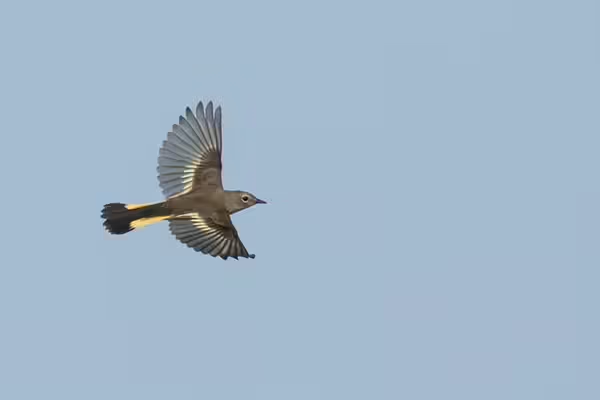
URBANA, Ill. — The night sky teems with migrating songbirds, aloft in their millions following routes etched in evolutionary time. But those flight paths may not be entirely innate, according to new research led by the University of Illinois Urbana-Champaign. Evidence from over 18,300 hours of recorded flight calls suggests songbirds may “talk” to other species as they migrate, forming social connections and — just maybe — exchanging information about the journey.
“We can’t be sure what they’re saying, but birds might broadcast calls during flight to signal their species, age, and sex. And we can certainly speculate that these flight calls could relate to navigation or finding suitable stopover habitat,” said lead study author Benjamin Van Doren, assistant professor in the Department of Natural Resources and Environmental Sciences, part of the College of Agricultural, Consumer and Environmental Sciences at Illinois. Van Doren began this research at the Cornell Lab of Ornithology.
Work from last year by the study’s co-authors at the University of Maryland Center for Environmental Science, Appalachian Laboratory suggested birds “buddy up” with other species at stopover sites during migration, but there was no evidence until now that different songbird species pair up or communicate vocally on the wing. Although Van Doren believes innate patterning and memory are still important drivers of migration behaviors, he says it’s time to rethink songbird migration through a social lens.
“In recent years, there has been an increasing recognition of the importance of social information in bird migration, but scientists have mainly documented this in species that travel during the day or in family groups,” he said. “The social environment also seems to be important in species like hawks and storks that form huge aggregations during their daytime migrations. Young birds learn behaviors from observing other birds and how they navigate — and not necessarily from family.”
But those visual cues go dark at night, when most songbirds travel. That’s what led Van Doren to wonder about other social cues. Fortunately, he had access to acoustic recordings of autumn nocturnal bird migrations from 26 sites over three years in eastern North America.
The 18,300-hour acoustic record would have been a processing and analytical nightmare before AI. Now, a machine learning tool allowed Van Doren’s team to quickly detect the signature flight calls of 27 species, including 25 well-sampled songbirds.
Read the full article from the College of ACES.
University of Illinois Extension develops educational programs, extends knowledge, and builds partnerships to support people, communities, and their environments as part of the state's land-grant institution. Extension serves as the leading public outreach effort for University of Illinois Urbana-Champaign and the College of Agricultural, Consumer and Environmental Sciences in all 102 Illinois counties through a network of 27 multi-county units and over 700 staff statewide. Extension’s mission is responsive to eight strategic priorities — community, economy, environment, food and agriculture, health, partnerships, technology and discovery, and workforce excellence — that are served through six program areas — 4-H youth development, agriculture and agribusiness, community and economic development, family and consumer science, integrated health disparities, and natural resources, environment, and energy.